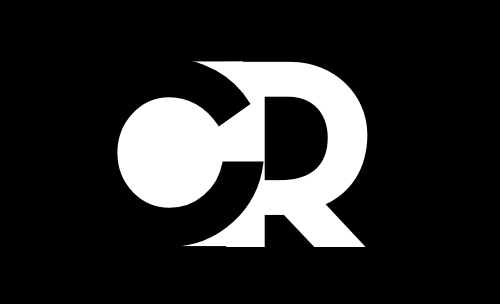Does homeowners insurance cover roof leaks from old age?

Homeowners insurance is designed to protect your home from unexpected damage, but what about roof leaks caused by old age? This is a common concern for homeowners, especially those with older roofs. While insurance typically covers sudden, accidental damage like a tree falling on your roof it usually doesn’t pay for wear and tear due to aging. Understanding your policy’s specifics is key to knowing what’s covered and what isn’t.
Roof leaks from gradual deterioration often fall under maintenance rather than an insurable event. However, if an old roof leaks after a covered peril, such as a storm, you might have a valid claim. The distinction between “sudden damage” and “normal aging” can make all the difference. Below, we’ll break down how homeowners insurance handles roof leaks, what factors affect coverage, and steps you can
What Does Homeowners Insurance Typically Cover for Roof Damage?
Homeowners insurance is designed to protect your home from sudden and accidental damage, not general wear and tear. When it comes to roof damage, most standard policies cover incidents like:
- Storm damage (hail, wind, hurricanes)
- Falling objects (tree limbs, debris)
- Fire and lightning strikes
- Vandalism or accidental damage
- Weight of ice or snow (in some policies)
However, insurance companies expect homeowners to maintain their roofs properly. If a roof fails because it’s old, poorly maintained, or simply worn out over time, the insurer is unlikely to cover the repairs.
Key Exclusions to Be Aware Of:
- Gradual deterioration (aging, rust, rot)
- Lack of maintenance (missing shingles, neglected repairs)
- Pre-existing damage (issues that existed before the policy started)
Insurance is meant for unexpected disasters, not for replacing a roof that has reached the end of its lifespan. If your roof is 20+ years old and starts leaking due to age, you’ll likely need to pay for repairs out of pocket—unless the leak was triggered by a covered peril (like a storm).
Does Homeowners Insurance Cover Roof Leaks Due to Old Age?
Homeowners insurance is designed to handle sudden, accidental damage not the slow decline of an aging roof. If your roof leaks because it’s old, worn out, or poorly maintained, your insurer will likely deny the claim. Here’s why:
Why Age-Related Leaks Are Typically Excluded
- Wear and Tear Isn’t Covered
- Insurance isn’t a maintenance plan. Shingles deteriorate over time, and leaks from gradual aging are considered a homeowner’s responsibility.
- Lack of Sudden “Peril”
- For coverage to apply, damage usually must result from a single, identifiable event (like a storm). Slow leaks from aging don’t qualify.
- Policy Language Matters
- Most policies explicitly exclude “deterioration,” “rot,” and “normal wear and tear.”
When Might an Old Roof Leak Be Covered?
There are rare exceptions where age-related leaks could get approval:
- Hidden Storm Damage: If an old roof leaks after a recent storm (e.g., undetected wind damage weakened it), insurers may cover repairs.
- Collapse from Age: Some policies cover sudden collapse, even if caused by aging but only if the collapse is abrupt and damages the home’s interior.
What You Can Do
- Review your policy’s “exclusions” section for terms like “deterioration.”
- Document everything if you suspect a covered peril (like hail) accelerated the leak.
- Get a professional inspection to prove the cause insurers often require this.
When Might an Old Roof Leak Be Covered?
While most age-related leaks are excluded, there are specific situations where homeowners insurance may provide coverage if the damage stems from a covered peril rather than simple wear and tear. Here’s when you might have a valid claim:
1. Storm Damage Accelerates the Problem
If your aging roof was already weakened but a recent hailstorm, windstorm, or fallen tree branch caused immediate leaks, insurers may cover repairs.
- Example: A 15-year-old roof with minor wear sustains hail damage, leading to sudden leaks. The hail (a covered event) could make the claim valid.
- Key Requirement: You must prove the leak was directly caused by the storm, not just old age. A roofing contractor’s inspection report is critical here.
2. Hidden Damage from a Previous Covered Event
Sometimes, storm damage isn’t obvious right away. If an old leak is traced back to prior wind or hail damage (even months earlier), insurers might approve the claim.
- Example: After heavy winds, a few shingles loosen but go unnoticed. Months later, water seeps in. If you can link the leak to the storm, coverage may apply.
3. Sudden Collapse Due to Age-Related Weakness
A few policies cover “collapse” as a separate peril. If an old roof caves in suddenly (not gradually sagging), damaging walls or ceilings inside, you might get partial coverage.
- Catch: The collapse must be abrupt, and interior damage usually must occur.
4. Maintenance Neglect vs. Unexpected Damage
If you’ve kept up with repairs but a sudden, unexpected issue arises (like a pipe bursting in the attic and soaking the roof deck), some policies may cover resulting leaks even on an older roof.
What’s the Best Way to Prove Your Claim?
- Act fast: Report leaks immediately after discovering them.
- Hire a roofer for an inspection: Their report can pinpoint whether a covered event (like hail) caused the leak.
- Check your policy’s “ensuing loss” clause: Some policies cover secondary damage (e.g., water intrusion) even if the original cause (aging) is excluded.
How to File a Roof Leak Insurance Claim? (Step-by-Step)
Filing an insurance claim for a roof leak can feel overwhelming especially if your insurer pushes back on age-related damage. Follow these steps to maximize your chances of approval and avoid costly mistakes.
Step 1: Document the Damage Immediately
- Take photos/videos of the leak, water stains, and any visible roof damage (missing shingles, cracks, etc.).
- Check for interior damage peeling paint, sagging ceilings, or mold can strengthen your claim.
- Note the date you first noticed the leak (insurers may argue delays indicate neglect).
Step 2: Mitigate Further Damage
- Place buckets under leaks, use tarps to cover exposed areas, or hire an emergency roofer for temporary fixes.
- Save receipts—most policies cover reasonable mitigation costs.
Step 3: Review Your Policy
- Look for key terms like “covered perils,” “exclusions,” and “ensuing loss” (which may cover water damage even if aging caused the initial leak).
- Check your deductible and coverage limits (some policies reduce payouts for older roofs).
Step 4: Schedule a Professional Roof Inspection

- Hire a licensed roofer (not just a contractor) to assess the cause. Their report should:
- Confirm if a covered event (like hail) contributed.
- Distinguish between wear-and-tear vs. sudden damage.
- Avoid letting the insurer’s adjuster inspect first they may downplay the damage.
Step 5: File the Claim
- Call your insurer or submit online, providing:
- Photos/videos.
- Inspection report.
- Repair estimates from roofers.
- Stick to facts: Describe the damage, not assumptions (e.g., “Leak started after last week’s hail storm” vs. “My roof is old”).
Step 6: Meet With the Insurance Adjuster
- Be present during their inspection with your roofer. Point out storm-related damage (e.g., dents from hail).
- Dispute lowball estimates with your contractor’s repair quote.
Step 7: Appeal if Denied
- If blamed on “wear and tear,” ask for a detailed denial letter and submit:
- A second opinion from another roofer.
- Weather reports proving storms occurred.
- Proof of prior maintenance (receipts for past repairs).
Pro Tip:
Some insurers penalize frequent claims. If repairs are minor (under $1,500), consider paying out-of-pocket to avoid rate hikes.
How to Prevent Age-Related Roof Leaks?
An aging roof doesn’t have to mean constant leaks proactive maintenance can add years to its lifespan and help you avoid costly insurance battles. Here’s how to stay ahead of wear and tear:
1. Schedule Annual Roof Inspections
- Twice-a-year checkups (spring and fall) catch minor issues before they escalate.
- Look for:
- Curling, cracked, or missing shingles
- Rusty flashing around chimneys/vents
- Clogged gutters (trapped water rots roofing materials)
- Bonus: Insurance companies often favor claims from homeowners with maintenance records.
2. Clean Gutters & Downspouts Regularly
- Clogged gutters cause water to pool, leading to:
- Wood rot in the roof deck
- Ice dams in winter
- Leaks along eaves
- Pro Tip: Install gutter guards to reduce debris buildup.
3. Trim Overhanging Tree Branches
- Falling limbs puncture shingles, while constant rubbing wears them down.
- Keep trees at least 6 feet away from your roof to prevent damage.
4. Replace Worn-Out Flashing
- Flashing (metal strips around chimneys, skylights, and vents) degrades faster than shingles.
- Check for:
- Loose or corroded sections
- Gaps where water could seep in
5. Address Small Repairs Immediately
- A few missing shingles? Replace them ASAP sun and rain accelerate underlying damage.
- Noticed a slight leak? Track its source before it spreads.
6. Improve Attic Ventilation
- Poor airflow traps heat and moisture, which:
- Warps roof decking
- Blisters shingles from underneath
- Solution: Ensure soffit vents and ridge vents are unblocked.
7. Consider a Protective Coating
- Elastomeric roof coatings (for flat or low-slope roofs) can seal minor cracks and reflect UV rays, extending roof life.
8. Know When to Replace (Before It’s Too Late)
- Asphalt shingles: 15–25 years
- Metal roofs: 30–50 years
- Tile roofs: 50+ years
If your roof is near the end of its lifespan, budget for replacement instead of waiting for leaks.
Final Thought: Insurance won’t reward neglect, but it may cover storm damage if you’ve kept your roof in good shape. Consistent care saves thousands in repairs and claim headaches.
Final Thoughts
While homeowners insurance won’t cover leaks caused solely by old age, understanding your policy and maintaining your roof can save you from costly surprises. Regular inspections, prompt repairs, and proper documentation strengthen your position if storm damage accelerates wear and tear. If you do file a claim, act quickly, provide thorough evidence, and don’t hesitate to appeal unfair denials. Ultimately, the best defense against leaks is proactive care extending your roof’s lifespan and preventing small issues from becoming major expenses. By staying vigilant, you’ll keep your home secure and avoid the headaches of unexpected repairs. Whether your roof is new or aging, a little prevention goes a long way.






